I received my copy of the 2019 World Radio and TV Handbook (WRTH) directly from the publisher earlier this week. It arrives annually–without fail–just prior to my Christmas holiday travels.
I look forward to receiving this excellent staple radio reference guide–and this is their 73rd edition! The WRTH has never disappointed, so my expectations are always quite high.
Once again, the WRTH lived up to my expectations.
WRTH’s team of noted DXers from around the world curate frequencies and broadcaster information by region; while I’m not sure how they orchestrate all of this, the end result is truly a symphony of radio information. In addition to broadcaster listings, WRTH’s radio reviews, feature articles, and annual HF report make for excellent reading.
But the WRTH isn’t just a frequency guide: the publication always devotes the first sixty or so pages to articles relating to various aspects of the radio hobby. Following, I offer a quick overview of these.
The first article always features a WRTH contributor: this year, they feature Kai Ludwig who is their contributor for Germany. His lifelong passion for international broadcasting started in what was then East Germany–he watched with interest as the broadcasting world change around him as the Iron Curtain fell.
The second set of articles is always my favorite: WRTH receiver reviews.
This year, WRTH begins with a review of the WinRadio Excalibur Sigma SDR receiver–which essentially set a new benchmark. They also review the SDRplay RSPduo, AirSpy HF+ (which truly impressed), the Reuter RDR51 “Pocket” SDR, XHDATA D-808 and the new Icom IC-R30 wideband handheld. What I love about the WRTH review selection is they span products ranging from £70 all the way up to £6200! Certainly, choices for everyone.
The next feature article, written by none other than Dave Porter, focuses on curtain antennas–the true work horses of international broadcasting. His article speaks to the history and theory behind curtains and notes several types often used by international broadcasters. A must-read!
Hans Johnson’s feature, Broadcasting For Peace, tells the inspiring story of how two stations with one mission helped promote peace in a troubled region of Africa. It truly is amazing how these stations gave their listeners a voice and hope.
The following article highlights a broadcaster on the opposite side of the globe: V7AB in the Marshall Islands. For this feature, journalist Mika Mäkeläinen traveled to the Marshall Islands and visited this powerful national AM broadcaster.
Speaking of powerful broadcasters, TWR Broadcast Engineer, Dave Pedersen, authors an article outlining the reasons for and challenges of operating and maintaining TWR’s Bonaire MW transmitting station.
Next, WRTH spotlight the annual Digital Update which summarizes the dynamic state of digital broadcasting. I’ve found this feature to be incredibly informative as we see how digital broadcasting is penetrating both domestic and international services.
The final article–a tradition–is the WRTH HF propagation report/forecast by Ulf-Peter Hoppe. Always an informative read despite the fact we’re in a solar low!
The 73rd is another fantastic edition of the World Radio TV Handbook. As I say every year, I’ve never been disappointed with WRTH. Their publishing standards are such that the quality of their reviews, their writing, and (most importantly) their broadcast listings are simply unparalleled.
For DXers who collect QSL cards, you’ll find that broadcaster contact information in WRTH is often more up-to-date than a broadcaster’s own website. When readers contact me asking for QSL information from an obscure broadcaster, the first place I search is the current WRTH. Remember: their information is based on volunteer contributors who specialize in specific regions of the world–the most knowledgeable regional DXers keep this publication accurate.
Purchase your copy of WRTH 2019 directly from WRTH’s publishers, or from a distributor like Universal Radio (US), Amazon.com (US), Radio HF (Canada), or check BookDepository.com (International).

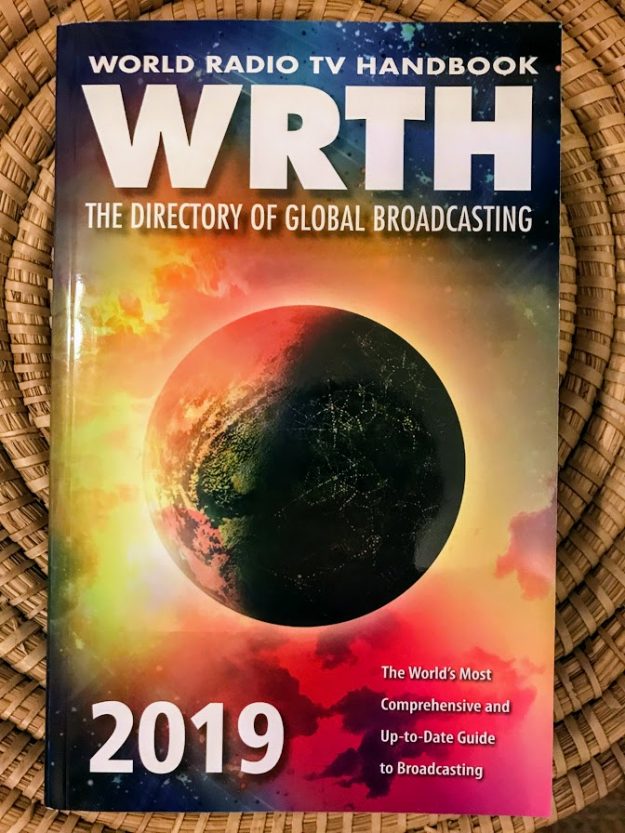
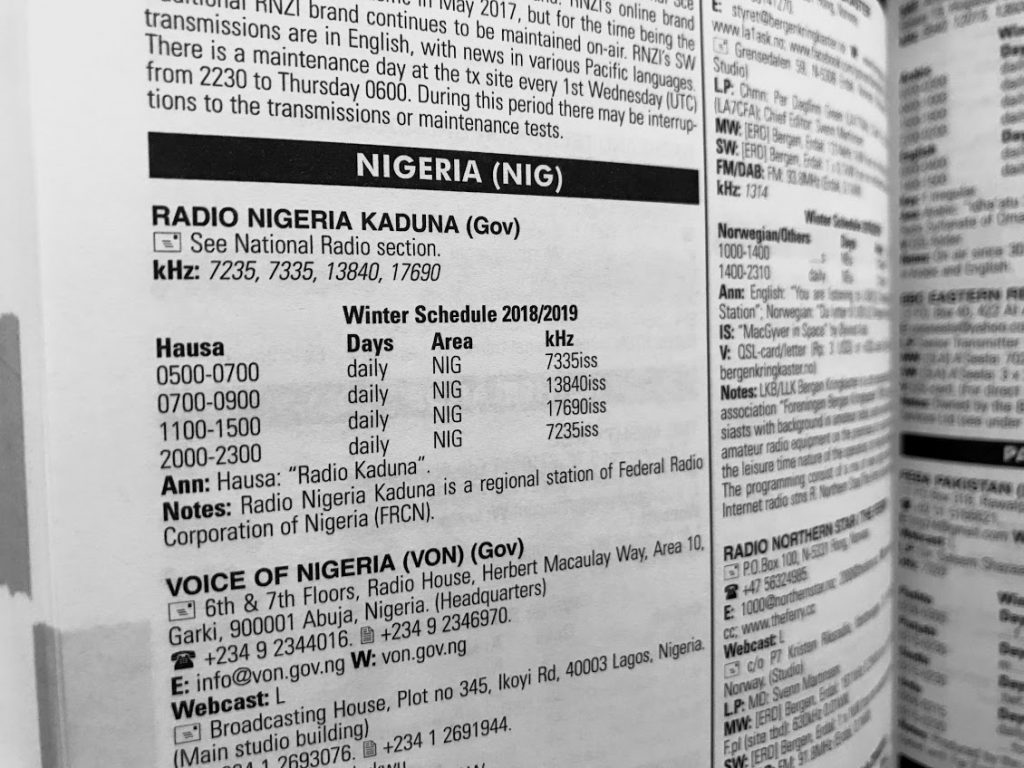
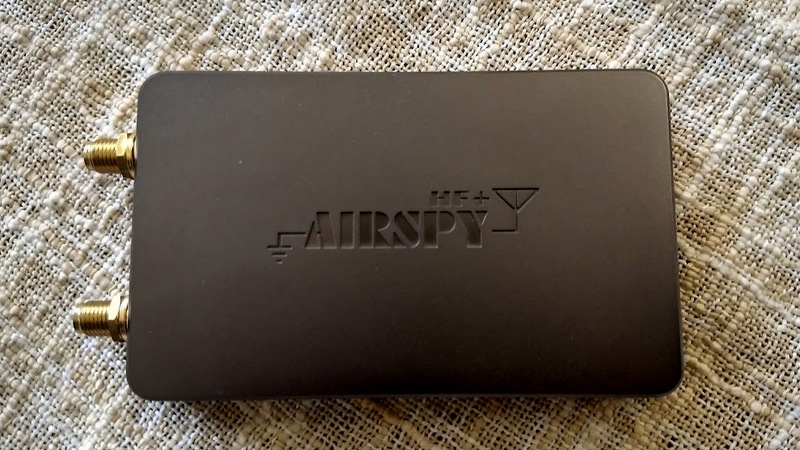
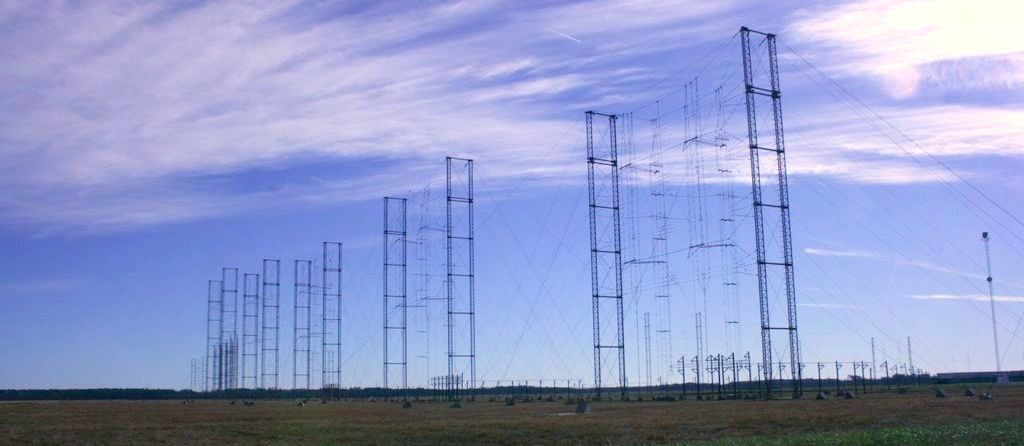
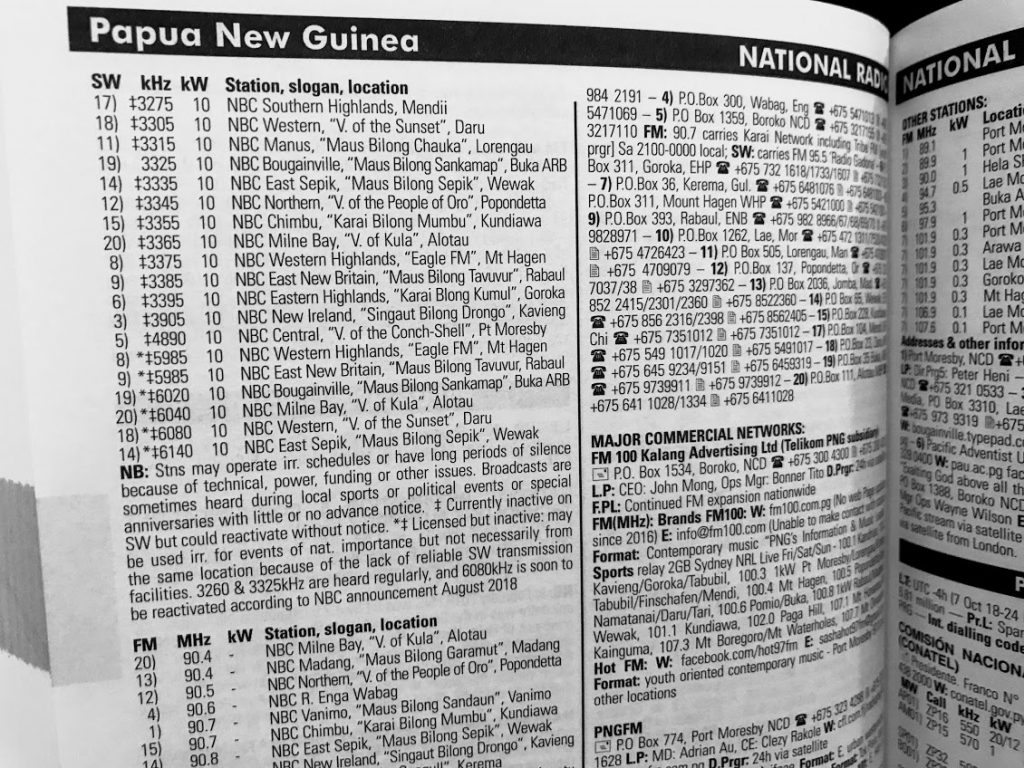
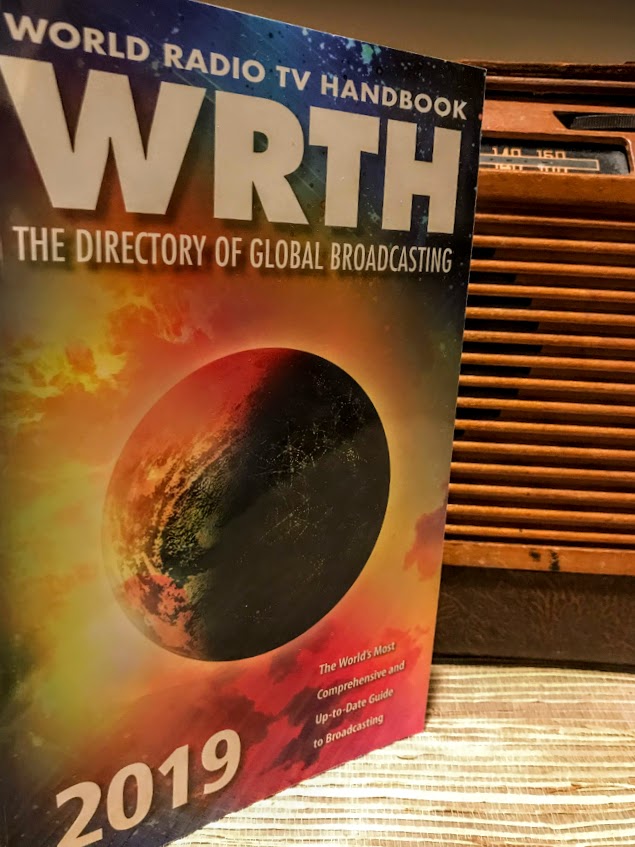
I’m looking forward to receiving my copy of the latest WRTH, particularly now that Thomas reports it contains a review of the WinRadio Excalibur Sigma.
I have been wanting to buy one of these receivers so badly, ever since it appeared as a full-page advertisement in the 2018 (last edition) of the WRTH. Alas, WinRadio has not accepted orders for them yet. If the receiver is “real” enough for a review to be written then I am hopeful that 2019 will be the year that it gets added to my shack!
Isn’t WinRadio local to you? I believe you should just camp out on their doorstep until they give you one, Mark!
Yes, Thomas; they are local (well I am in Melbourne every few weeks)!
I am begging them to allow me to buy one! Having an Excalibur for LW, MW, SW, FM Broadcast archiving (of Spectrum) would be so wonderful. I realize it will come at a cost, but with 5 communications receivers (Yaesu, Kenwood, Icom), 5 portables and 4 other SDRs in my kit the only one receiver I ever use is my WinRadio Excalibur – to be its total perfection.
I can’t wait to read the review!
The problem with that link to Radio HF is that the website has not been updated, it mentions 2015. I know I looked a few months ago, and wondered if Sheldon was still in the business. Maybe it doesn’t need much (it doesn’t bother me that it’s a simple mostly text page), but the page is his interface to potential customers. Maybe he’s gone to Facebook, or maybe he assumes nobody new is coming in so his existing customers are good enough, but any business needs to be looking towards the people who aren’t yet customers.
It bugs me a lot that the local ham clubs don’t grasp this, so the flea markets aren’t promoted in more general spaces. But in that case, it’s not just about selling tickets to the fleamarket, it’s an excuse to be visible and maybe draw in new people to the hobby. It also increases the number of attendees, valuable to those selling things.
Michael
…the $64,000 question…!!! I have a cheap Sony clock radio (icf-773), which receives local stations. I was thinking if I purchase a Eton/Grundig AN-200 antenna to use next to this radio, but would it be as good as purchasing a CCrane 2E radio, which was built for long DX’ing?…I don’t want to spend $200 for this radio, if some Medium wave antenna will do…so, any feedback, please?
Don’t own an icf-773 so don’t know how good a receiver it is. If it’s not a particularly strong performer – I doubt it was designed with DXing in mind – then that might limit any performance enhancement from the Eton/Grundig antenna. If you’re really after a receiver that performs well for DXing then I would spash out on the Crane 2E. I very much doubt using that antenna in conjunction with the icf-773 would raise its DXing ability to that of the Crane E2, or even come close. It might even cause overloading from strong local signals making reception even worse.
Speaking of books on shortwave listening, I wonder if anyone can identify an old book on this subject I used to check out from my local library growing up:
Basically it was an introduction to listening to the shortwave bands, how to choose a receiver and some basic technical information etc. I remember it had a cartoon of a delivery guy manhandling and roughly treating a package containing a receiver (Hallicrafters?) in front of it’s horrified new owner. I think the caption read something like “here’s your new radio pal” or something like that. The time period for me checking this out was late 1960s.
Can anyone identify this book for me?
I’d love to track down a second hand copy and purchase it.
Hi John,
Is it this one? I took this one out of my local library back in the 80’s:
https://www.amazon.co.uk/Short-Wave-Radio-Listeners-Handbook/dp/0850598834
Cap
Sorry John, just noticed this was for the 60’s, I think I need glasses.
Hi Cap,
I’m pretty sure it’s one of the following by Len Buckwalter, they appear to be different editions of the same book (the cover on #2 rings a bell).
1. https://www.amazon.com/short-wave-radio-listening-Skillcraft-library/dp/B0007EIBS2
2. https://www.amazon.com/B-C-s-Short-Wave-Listening/dp/0572002882
I see secondhand copies are available, just rooting round the internet trying to confirm my hunch before I buy.
Thanks for the reply anyway!